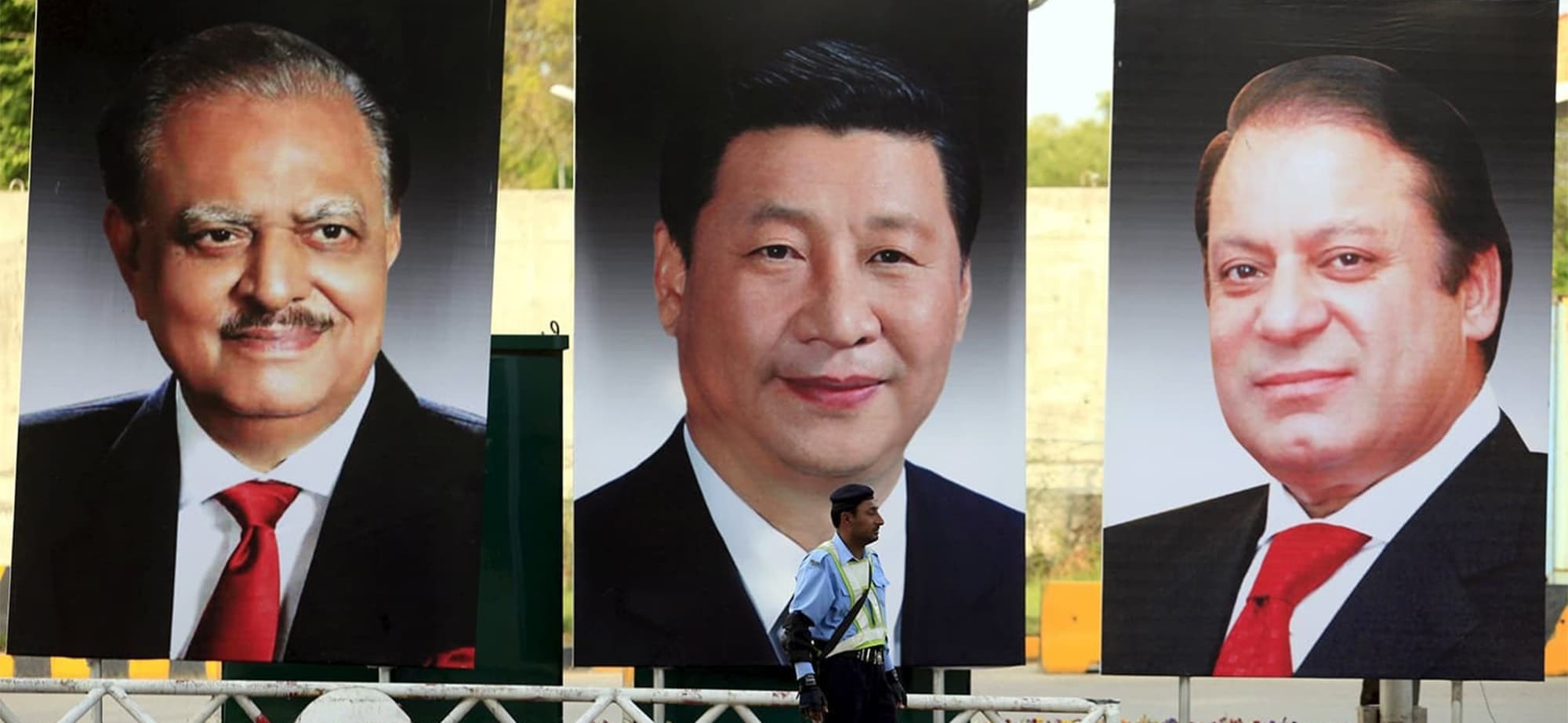
Exclusive: CPEC master plan revealed
- Plan eyes agriculture
- Large surveillance system for cities
- Visa-free entry for Chinese nationals
The floodgates are about to open. Prime Minister Nawaz Sharif arrived in Beijing over the weekend to participate in the One Belt, One Road summit, and the top item on his agenda is to finalise the Long Term Plan (LTP) for the China-Pakistan Economic Corridor. [See next tab for details on how the plan was made].
Dawn has acquired exclusive access to the original document, and for the first time its details are being publicly disclosed here. The plan lays out in detail what Chinese intentions and priorities are in Pakistan for the next decade and a half, details that have not been discussed in public thus far.


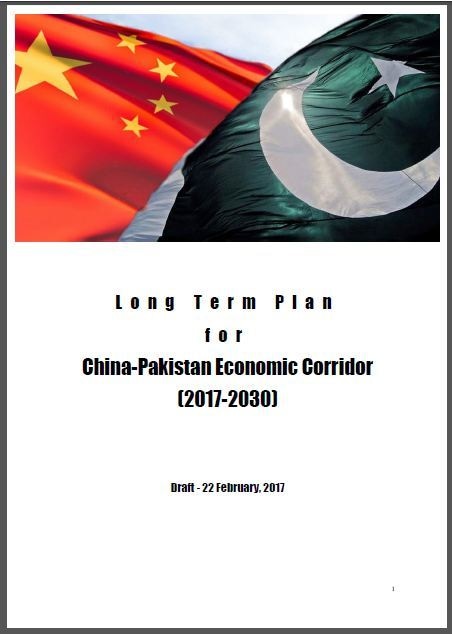
For instance, thousands of acres of agricultural land will be leased out to Chinese enterprises to set up “demonstration projects” in areas ranging from seed varieties to irrigation technology. A full system of monitoring and surveillance will be built in cities from Peshawar to Karachi, with 24 hour video recordings on roads and busy marketplaces for law and order. A national fibreoptic backbone will be built for the country not only for internet traffic, but also terrestrial distribution of broadcast TV, which will cooperate with Chinese media in the “dissemination of Chinese culture”.
The plan envisages a deep and broad-based penetration of most sectors of Pakistan’s economy as well as its society by Chinese enterprises and culture. Its scope has no precedent in Pakistan’s history in terms of how far it opens up the domestic economy to participation by foreign enterprises. In some areas the plan seeks to build on a market presence already established by Chinese enterprises, eg Haier in household appliances, ChinaMobile and Huawei in telecommunications and China Metallurgical Group Corporation (MCC) in mining and minerals.
In other cases, such as textiles and garments, cement and building materials, fertiliser and agricultural technologies (among others) it calls for building the infrastructure and a supporting policy environment to facilitate fresh entry. A key element in this is the creation of industrial parks, or special economic zones, which “must meet specified conditions, including availability of water…perfect infrastructure, sufficient supply of energy and the capacity of self service power”, according to the plan.
But the main thrust of the plan actually lies in agriculture, contrary to the image of CPEC as a massive industrial and transport undertaking, involving power plants and highways. The plan acquires its greatest specificity, and lays out the largest number of projects and plans for their facilitation, in agriculture.
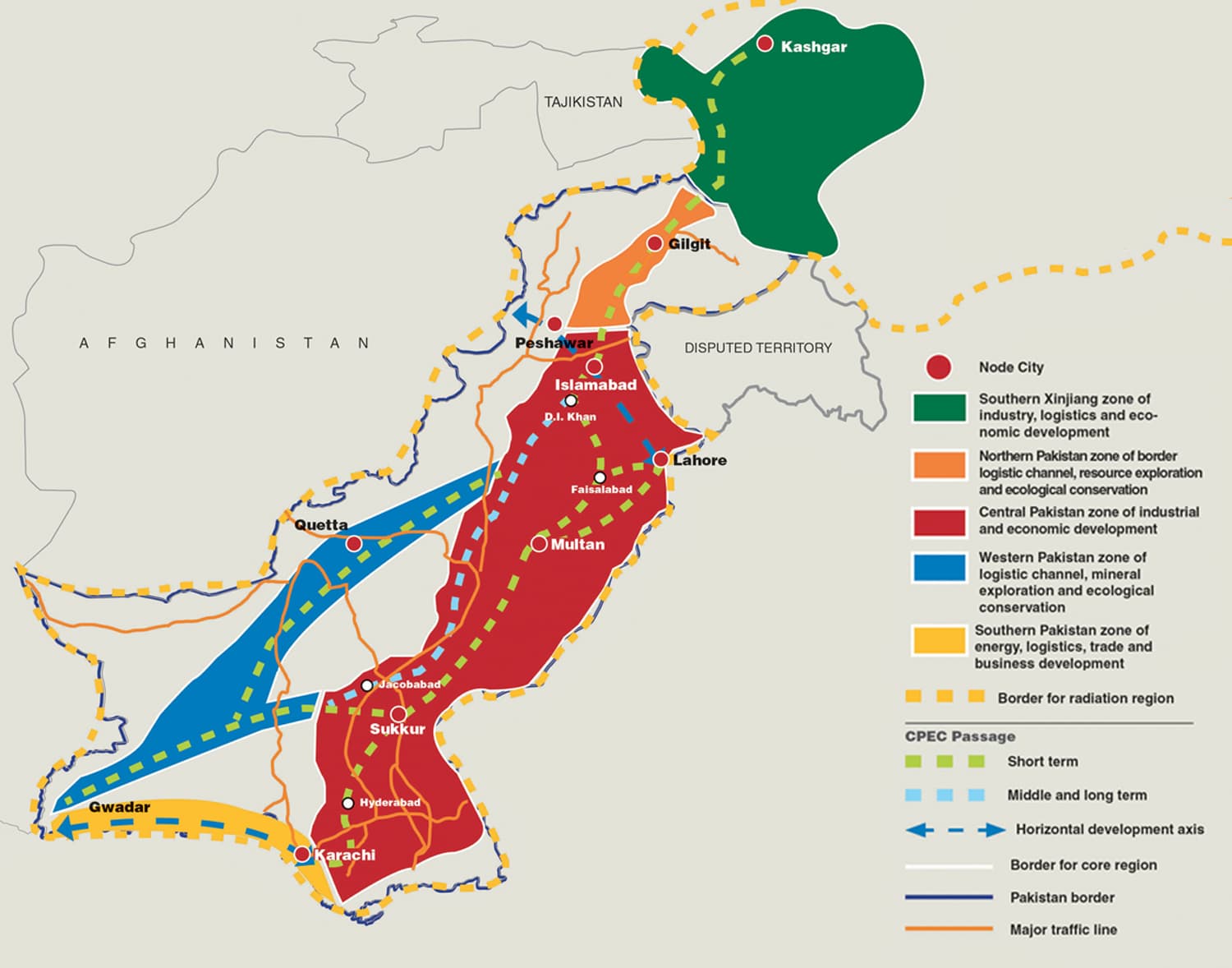
Header photo courtesy Reuters.
Agriculture
For agriculture, the plan outlines an engagement that runs from one end of the supply chain all the way to the other. From provision of seeds and other inputs, like fertiliser, credit and pesticides, Chinese enterprises will also operate their own farms, processing facilities for fruits and vegetables and grain. Logistics companies will operate a large storage and transportation system for agrarian produce.
It identifies opportunities for entry by Chinese enterprises in the myriad dysfunctions that afflict Pakistan’s agriculture sector. For instance, “due to lack of cold-chain logistics and processing facilities, 50% of agricultural products go bad during harvesting and transport”, it notes.
A full system of monitoring and surveillance will be built in cities from Peshawar to Karachi, with 24 hour video recordings on roads and busy marketplaces for law and order.
Enterprises entering agriculture will be offered extraordinary levels of assistance from the Chinese government. They are encouraged to “[m]ake the most of the free capital and loans” from various ministries of the Chinese government as well as the China Development Bank. The plan also offers to maintain a mechanism that will “help Chinese agricultural enterprises to contact the senior representatives of the Government of Pakistan and China”.
The government of China will “actively strive to utilize the national special funds as the discount interest for the loans of agricultural foreign investment”. In the longer term the financial risk will be spread out, through “new types of financing such as consortium loans, joint private equity and joint debt issuance, raise funds via multiple channels and decentralise financing risks”.

The plan proposes to harness the work of the Xinjiang Production and Construction Corps to bring mechanization as well as scientific technique in livestock breeding, development of hybrid varieties and precision irrigation to Pakistan. It sees its main opportunity as helping the Kashgar Prefecture, a territory within the larger Xinjiang Autonomous Zone, which suffers from a poverty incidence of 50 per cent, and large distances that make it difficult to connect to larger markets in order to promote development. The prefecture’s total output in agriculture, forestry, animal husbandry and fishery amounted to just over $5 billion in 2012, and its population was less than 4 million in 2010, hardly a market with windfall gains for Pakistan.
However, for the Chinese, this is the main driving force behind investing in Pakistan’s agriculture, in addition to the many profitable opportunities that can open up for their enterprises from operating in the local market. The plan makes some reference to export of agriculture goods from the ports, but the bulk of its emphasis is focused on the opportunities for the Kashgar Prefecture and Xinjiang Production Corps, coupled with the opportunities for profitable engagement in the domestic market.
The plan discusses those engagements in considerable detail. Ten key areas for engagement are identified along with seventeen specific projects. They include the construction of one NPK fertilizer plant as a starting point “with an annual output of 800,000 tons”. Enterprises will be inducted to lease farm implements, like tractors, “efficient plant protection machinery, efficient energy saving pump equipment, precision fertilization drip irrigation equipment” and planting and harvesting machinery.
The plan shows great interest in the textiles industry in particular, but the interest is focused largely on yarn and coarse cloth.
Meat processing plants in Sukkur are planned with annual output of 200,000 tons per year, and two demonstration plants processing 200,000 tons of milk per year. In crops, demonstration projects of more than 6,500 acres will be set up for high yield seeds and irrigation, mostly in Punjab. In transport and storage, the plan aims to build “a nationwide logistics network, and enlarge the warehousing and distribution network between major cities of Pakistan” with a focus on grains, vegetables and fruits. Storage bases will be built first in Islamabad and Gwadar in the first phase, then Karachi, Lahore and another in Gwadar in the second phase, and between 2026-2030, Karachi, Lahore and Peshawar will each see another storage base.
Asadabad, Islamabad, Lahore and Gwadar will see a vegetable processing plant, with annual output of 20,000 tons, fruit juice and jam plant of 10,000 tons and grain processing of 1 million tons. A cotton processing plant is also planned initially, with output of 100,000 tons per year.
“We will impart advanced planting and breeding techniques to peasant households or farmers by means of land acquisition by the government, renting to China-invested enterprises and building planting and breeding bases” it says about the plan to source superior seeds.
In each field, Chinese enterprises will play the lead role. “China-invested enterprises will establish factories to produce fertilizers, pesticides, vaccines and feedstuffs” it says about the production of agricultural materials.
“China-invested enterprises will, in the form of joint ventures, shareholding or acquisition, cooperate with local enterprises of Pakistan to build a three-level warehousing system (purchase & storage warehouse, transit warehouse and port warehouse)” it says about warehousing.
One of the most intriguing chapters in the plan speaks of a long belt of coastal enjoyment industry that includes yacht wharfs, cruise homeports, nightlife, city parks, public squares, theaters, golf courses and spas, hot spring hotels and water sports.
Then it talks about trade. “We will actively embark on cultivating surrounding countries in order to improve import and export potential of Pakistani agricultural products and accelerate the trade of agricultural products. In the early stages, we will gradually create a favorable industry image and reputation for Pakistan by relying on domestic demand.”
In places the plan appears to be addressing investors in China. It says Chinese enterprises should seek “coordinated cooperation with Pakistani enterprises” and “maintain orderly competition and mutual coordination.” It advises them to make an effort “seeking for powerful strategic partners for bundling interest in Pakistan.”
As security measures, enterprises will be advised “to respect the religions and customs of the local people, treat people as equals and live in harmony”. They will also be advised to “increase local employment and contribute to local society by means of subcontracting and consortiums.” In the final sentence of the chapter on agriculture, the plan says the government of China will “[s]trengthen the safety cooperation with key countries, regions and international organizations, jointly prevent and crack down on terrorist acts that endanger the safety of Chinese overseas enterprises and their staff.”
Industry
For industry, the plan trifurcates the country into three zones: western and northwestern, central and southern. Each zone is marked to receive specific industries in designated industrial parks, of which only a few are actually mentioned. The western and northwestern zone, covering most of Balochistan and KP province, is marked for mineral extraction, with potential in chrome ore, “gold reserves hold a considerable potential, but are still at the exploration stage”, and diamonds. One big mineral product that the plan discusses is marble. Already, China is Pakistan’s largest buyer of processed marble, at almost 80,000 tons per year. The plan looks to set up 12 marble and granite processing sites in locations ranging from Gilgit and Kohistan in the north, to Khuzdar in the south.
The central zone is marked for textiles, household appliances and cement. Four separate locations are pointed out for future cement clusters: Daudkhel, Khushab, Esakhel and Mianwali. The case of cement is interesting, because the plan notes that Pakistan is surplus in cement capacity, then goes on to say that “in the future, there is a larger space of cooperation for China to invest in the cement process transformation”.
“There is a plan to build a pilot safe city in Peshawar, which faces a fairly severe security situation in northwestern Pakistan”.
For the southern zone, the plan recommends that “Pakistan develop petrochemical, iron and steel, harbor industry, engineering machinery, trade processing and auto and auto parts (assembly)” due to the proximity of Karachi and its ports. This is the only part in the report where the auto industry is mentioned in any substantive way, which is a little surprising because the industry is one of the fastest growing in the country. The silence could be due to lack of interest on the part of the Chinese to acquire stakes, or to diplomatic prudence since the sector is, at the moment, entirely dominated by Japanese companies (Toyota, Honda and Suzuki).
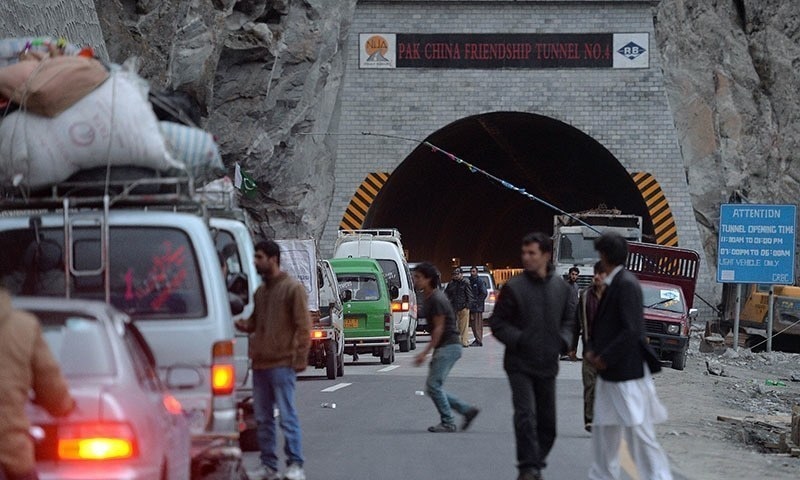
Gwadar, also in the southern zone, “is positioned as the direct hinterland connecting Balochistan and Afghanistan.” As a CPEC entreport, the plan recommends that it be built into “a base of heavy and chemical industries, such as iron and steel/petrochemical”. It notes that “some Chinese enterprises have started investment and construction in Gwadar” taking advantage of its “superior geographical position and cheap shipping costs to import crude oil from the Middle East, iron ore and coking coal resources from South Africa and New Zealand” for onward supply to the local market “as well as South Asia and Middle East after processing at port.”
The plan shows great interest in the textiles industry in particular, but the interest is focused largely on yarn and coarse cloth. The reason, as the plan lays out, is that in Xinjiang the textile industry has already attained higher levels of productivity. Therefore, “China can make the most of the Pakistani market in cheap raw materials to develop the textiles & garments industry and help soak up surplus labor forces in Kashgar”. The ensuing strategy is described cryptically as the principle of “introducing foreign capital and establishing domestic connections as a crossover of West and East".
Preferential policies will be necessary to attract enterprises to come to the newly built industrial parks envisioned under the plan. The areas where such preferences need to be extended are listed in the plan as “land, tax, logistics and services” as well as land price, “enterprise income tax, tariff reduction and exemption and sales tax rate.”

Fibreoptics and surveillance
One of the oldest priorities for the Chinese government since talks on CPEC began is fibreoptic connectivity between China and Pakistan. An MoU for such a link was signed in July 2013, at a time when CPEC appeared to be little more than a road link between Kashgar and Gwadar. But the plan reveals that the link goes far beyond a simple fibreoptic set up.
China has various reasons for wanting a terrestrial fibreoptic link with Pakistan, including its own limited number of submarine landing stations and international gateway exchanges which can serve as a bottleneck to future growth of internet traffic. This is especially true for the western provinces. “Moreover, China’s telecom services to Africa need to be transferred in Europe, so there is certain hidden danger of the overall security” says the plan. Pakistan has four submarine cables to handle its internet traffic, but only one landing station, which raises security risks as well.
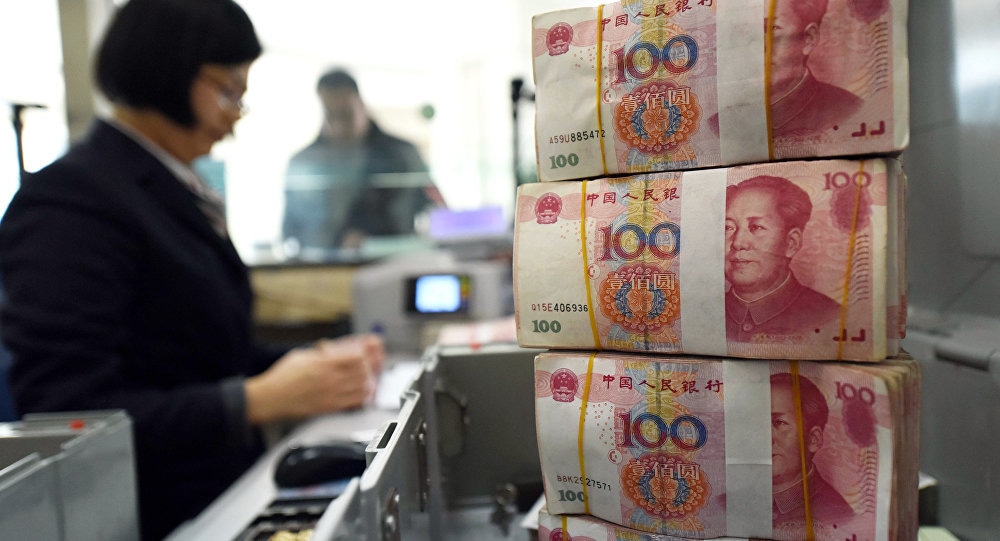
So the plan envisages a terrestrial cable across the Khunjerab pass to Islamabad, and a submarine landing station in Gwadar, linked to Sukkur. From there, the backbone will link the two in Islamabad, as well as all major cities in Pakistan.
The expanded bandwidth that will open up will enable terrestrial broadcast of digital HD television, called Digital Television Terrestrial Multimedia Broadcasting (DTMB). This is envisioned as more than just a technological contribution. It is a “cultural transmission carrier. The future cooperation between Chinese and Pakistani media will be beneficial to disseminating Chinese culture in Pakistan, further enhancing mutual understanding between the two peoples and the traditional friendship between the two countries.” The plan says nothing about how the system will be used to control the content of broadcast media, nor does it say anything more about “the future cooperation between Chinese and Pakistani media”.
Judging from their conversations with the government, it appears that the Pakistanis are pushing the Chinese to begin work on the Gwadar International Airport, whereas the Chinese are pushing for early completion of the Eastbay Expressway.
It also seeks to create an electronic monitoring and control system for the border in Khunjerab, as well as run a “safe cities” project. The safe city project will deploy explosive detectors and scanners to “cover major roads, case-prone areas and crowded places…in urban areas to conduct real-time monitoring and 24 hour video recording.” Signals gathered from the surveillance system will be transmitted to a command centre, but the plan says nothing about who will staff the command centre, what sort of signs they will look for, and who will provide the response.
“There is a plan to build a pilot safe city in Peshawar, which faces a fairly severe security situation in northwestern Pakistan” the plan says, following which the program will be extended to major cities such as Islamabad, Lahore and Karachi, hinting that the feeds will be shared eventually, and perhaps even recorded.
Tourism and recreation
One of the most intriguing chapters in the plan is the one that talks about the development of a “coastal tourism” industry. It speaks of a long belt of coastal enjoyment industry that includes yacht wharfs, cruise homeports, nightlife, city parks, public squares, theaters, golf courses and spas, hot spring hotels and water sports. The belt will run from Keti Bunder to Jiwani, the last habitation before the Iranian border. Then, somewhat disappointingly, it adds that “more work needs to be done” before this vision can be realized.
The plans are laid out in surprising detail. For instance, Gwadar will feature international cruise clubs that “provide marine tourists private rooms that would feel as though they were ‘living in the ocean’”. And just as the feeling sinks in, it goes on to say that “[f]or the development of coastal vacation products, Islamic culture, historical culture, folk culture and marine culture shall all be integrated.” Apparently more work needs to be done here too.

For Ormara, the plan recommends building “unique recreational activities” that would also encourage “the natural, exciting, participatory, sultry, and tempting characteristics” to come through. For Keti Bunder it recommends wildlife sanctuaries, an aquarium and a botanical garden. For Sonmiani, on the eastern edge of Karachi, “projects like a coastal beach, extended greenway, coastal villa, car camp, SPA, beach playground and a seafood street can be developed.”
It is an expansive vision that the plan lays out, and towards the end, it asks for the following: “Make the visa-free tourism possible with China to provide more convenient policy support for Chinese tourists to Pakistan.” There is no mention of a reciprocal arrangement for Pakistani nationals visiting China.
Finance and risk
In any plan, the question of financial resources is always crucial. The long term plan drawn up by the China Development Bank is at its sharpest when discussing Pakistan’s financial sector, government debt market, depth of commercial banking and the overall health of the financial system. It is at its most unsentimental when drawing up the risks faced by long term investments in Pakistan’s economy.
The chief risk the plan identifies is politics and security. “There are various factors affecting Pakistani politics, such as competing parties, religion, tribes, terrorists, and Western intervention” the authors write. “The security situation is the worst in recent years”. The next big risk, surprisingly, is inflation, which the plan says has averaged 11.6 per cent over the past 6 years. “A high inflation rate means a rise of project-related costs and a decline in profits.”
Efforts will be made, says the plan, to furnish “free and low interest loans to Pakistan” once the costs of the corridor begin to come in. But this is no free ride, it emphasizes. “Pakistan’s federal and involved local governments should also bear part of the responsibility for financing through issuing sovereign guarantee bonds, meanwhile protecting and improving the proportion and scale of the government funds invested in corridor construction in the financial budget.”

It asks for financial guarantees “to provide credit enhancement support for the financing of major infrastructure projects, enhance the financing capacity, and protect the interests of creditors.” Relying on the assessments of the IMF, World Bank and the ADB, it notes that Pakistan’s economy cannot absorb FDI much above $2 billion per year without giving rise to stresses in its economy. “It is recommended that China’s maximum annual direct investment in Pakistan should be around US$1 billion.” Likewise, it concludes that Pakistan’s ceiling for preferential loans should be $1 billion, and for non preferential loans no more than $1.5 billion per year.
It advises its own enterprises to take precautions to protect their own investments. “International business cooperation with Pakistan should be conducted mainly with the government as a support, the banks as intermediary agents and enterprises as the mainstay.” Nor is the growing engagement some sort of brotherly involvement. “The cooperation with Pakistan in the monetary and financial areas aims to serve China’s diplomatic strategy.”
The other big risk the plan refers to is exchange rate risk, after noting the severe weakness in Pakistan’s ability to earn foreign exchange. To mitigate this, the plan proposes tripling the size of the swap mechanism between the RMB and the Pakistani rupee to 30 billion Yuan, diversifying power purchase payments beyond the dollar into RMB and rupee basket, tapping the Hong Kong market for RMB bonds, and diversifying enterprise loans from a wide array of sources. The growing role of the RMB in Pakistan’s economy is a clearly stated objective of the measures proposed.
Conclusion
It is not clear how much of the plan will be earnestly followed up and how much is there simply to evince interest from the Pakistani side. In the areas of interest contained in the plan, it appears access to the full supply chain of the agrarian economy is a top priority for the Chinese. After that the capacity of the textile spinning sector to serve the raw material needs of Xinjiang, and the garment and value added sector to absorb Chinese technology is another priority.
Next is the growing domestic market, particularly in cement and household appliances, which receive detailed treatment in the plan. And lastly, through greater financial integration, the plan seeks to advance the internationalization of the RMB, as well as diversify the risks faced by Chinese enterprises entering Pakistan.
In some areas the plan seeks to build on a market presence already established by Chinese enterprises, eg Haier in household appliances, ChinaMobile and Huawei in telecommunications and China Metallurgical Group Corporation (MCC) in mining and minerals.
Gwadar receives passing mention as an economic prospect, mainly for its capacity to serve as a port of exit for minerals from Balochistan and Afghanistan, and as an entreport for wider trade in the greater Indian Ocean zone from South Africa to New Zealand. There is no mention of China’s external trade being routed through Gwadar. Judging from their conversations with the government, it appears that the Pakistanis are pushing the Chinese to begin work on the Gwadar International Airport, whereas the Chinese are pushing for early completion of the Eastbay Expressway.
But the entry of Chinese firms will not be limited to the CPEC framework alone, as the recent acquisition of the Pakistan Stock Exchange, and the impending acquisition of K Electric demonstrate. In fact, CPEC is only the opening of the door. What comes through once that door has been opened is difficult to forecast.
Addendum: Apropos a story titled “CPEC master plan revealed” appearing in Dawn on May 15, Minister for Planning, Development and Reform Ahsan Iqbal has said that CPEC’s Long Term Plan is not a project document, rather it “delineates the aspirations of both sides”.
“It is a live document and both sides [China and Pakistan] have an understanding to modify it as per the need besides reviewing it periodically,” Mr Iqbal claimed on Monday.
To read more about how the plan came together click the tab below.
The LTP was begun in November 2013 (see detailed timeline in previous tab), when the National Development and Reform Commission (NDRC) of the Government of China asked the China Development Bank (CDB) to compile a detailed roadmap to guide the engagement with Pakistan that had begun in May of that same year. For the next two years, till December 2015, the CDB worked with teams from the NDRC, as well the ministries of Transport, National Energy Administration and China Tourism Planning Institute to develop a detailed plan to be implemented over the next 15 years, till the year 2030, that will open the doors for Chinese enterprises – private and public – to enter every area of Pakistan’s economy.

Chinese expert teams made multiple visits to Pakistan and Xinjiang during this period, drawing up a detailed picture of the situation in every area, prioritizing those that will come first, and identifying “hidden dangers”, bottlenecks and risks that should be anticipated along the way.
The report was first transmitted to the Government of Pakistan in June 2015, where it gathered dust for a few months. Under prodding from the Chinese government, a team from Pakistan met their counterparts in Beijing on November 12th, 2015 and gave their feedback. A “special bilateral meeting” was held on Dec 2nd, and the plan finalized on Dec 29th. It was then agreed by both sides that final signatures of the highest authorities, in Pakistan’s case the Prime Minister, would be obtained by March 31st. That deadline was missed, and the signatures are expected to be placed now that the PM is in Beijing.
In the meantime, a small formality asserted itself. For the plan to be finalized, the assent of the provincial governments was required. For that purpose, a second draft was prepared that could be shared with the provincial authorities. That draft is 31 pages long and significantly watered down with all details removed, containing only broad brushstroke descriptions of the “areas of cooperation” that both countries have identified.
The original plan drawn up by the CDB is 231 pages long, and is an astonishingly detailed roadmap of the pitfalls and opportunities that Chinese enterprises can expect as they venture into every area of the economy and society. It contains specifics of what is going to be built by the Chinese over the next decade and a half, and its detailed description of Pakistan’s economy and its attendant risks shows clearly that the Chinese are fully aware of what they are getting involved in.




